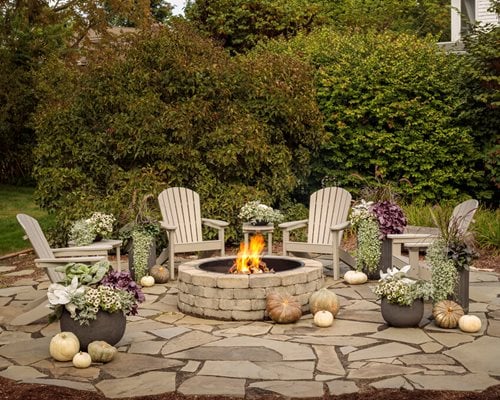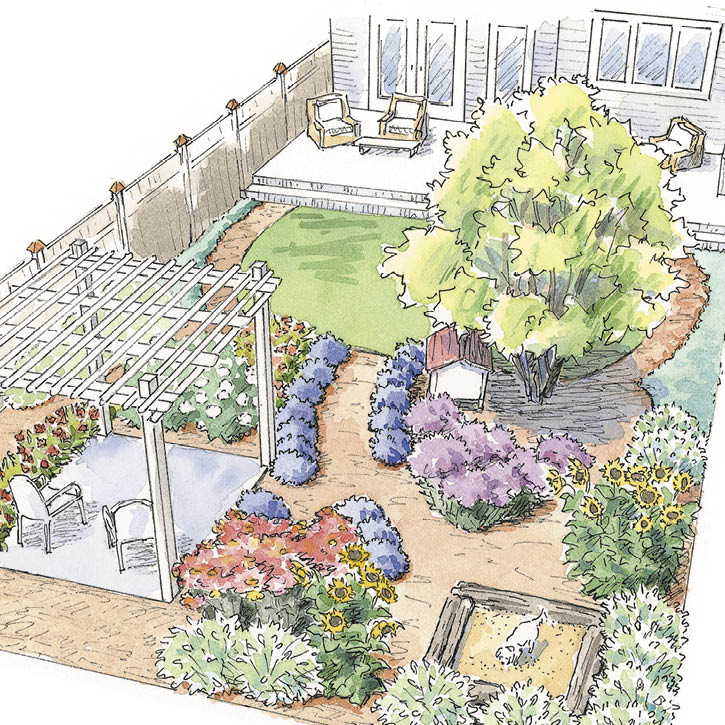Garden Design: Transforming Your Outdoor Space
Understanding Garden Layouts
When diving into the world of garden design, the first step is understanding various garden layouts. A well-planned garden can elevate the aesthetics of your home, provide a relaxing space, and even yield fresh produce. Various styles, such as **formal gardens** and **informal gardens**, cater to different tastes and gardening skills. Incorporating elements like symmetry in formal gardens, or the more spontaneous and natural layouts of informal gardens, can help create an area that reflects your personality. Remember, the layout sets the foundation for the entire garden experience.
Exploring Different Garden Styles
Numerous **garden styles** exist, and choosing the right one can significantly impact your enjoyment of the space. For beginners, a **cottage garden** filled with diverse blooms and plants can be quite rewarding as it typically requires less formality and structure. Alternatively, a **modern minimalist garden** that employs geometric lines and monochromatic color schemes can offer a striking visual impact with less maintenance. This transitional step in your planning process should feel engaging—research images of gardens that inspire you, and note down the elements you’d love to incorporate into your own space. For instance, adding rustic pathways or a vibrant flower border can transform flat areas into dynamic visual points.
Planning Zones Within Your Garden
One effective way to design your garden is by planning different **zones** that serve distinct purposes. For instance, you might want an area for relaxation, another for growing vegetables, and further zones for play or entertainment. By segmenting the space, each zone can have its own character while contributing to a cohesive overall design. Adding structural features, such as raised beds or trellises, not only helps define these areas but can also organize workflow and maintenance routines. For example, positioning **herb gardens** near the kitchen can make cooking more enjoyable and convenient, demonstrating a practical application of zone mapping.
Incorporating Key Features
Key features like water elements and seating areas can drastically affect the way you experience your garden. **Water gardens**, featuring fountains or ponds, not only add an element of tranquility but can attract wildlife, turning your outdoor space into a lively habitat. As you sit by a calming water feature, you’ll enhance relaxation while enjoying the beauty surrounding you. Strategic seating areas, such as patios or benches, encourage visitors to linger and enjoy nature’s beauty. Whether opting for a secluded nook or a prominent patio, incorporating comfortable seating shows a significant commitment to creating an inviting outdoor environment.
Benefits of Garden Accessories
Accessories can enhance the function and aesthetic of your garden space. Exploring items like **decorative pots**, unique garden sculptures, or even outdoor lighting creates an ambiance that can transform evening gatherings. Moreover, adding mulch, stones, or gravel not only adds texture but also fulfills maintenance needs—most notably, weed control. Visualize how accessories can complement your garden design to elevate its appeal. For example, incorporating garden lights along pathways not only ensures safety when walking at night but also accentuates your garden’s beauty right into the late hours.

Experimenting with Color Schemes
A garden is an expression of art and nature intertwined; thus, experimenting with color schemes can enhance both the emotional and aesthetic impact of your space. Choose plants that flower in different seasons to enjoy year-round color. For example, combining **bright, bold flowers** with lush greenery creates a vibrant contrast that’s pleasing to the eye. Additionally, consider the time of day and natural light variations that can affect how colors appear in your garden. At twilight, strategic placement of **white- or light-colored flowers** sparkling against the darkening sky can create breathtaking visual experiences.
Creating Functional Spaces
Functionality in your garden design can ultimately lead to greater enjoyment and minimal maintenance hassle. Keeping environments, such as **vegetable plots** or **flower beds**, easily reachable ensures that gardeners don’t become frustrated when tending their plants. Establishing pathways for easier access or using **raised beds** can cater to space limitations while ensuring practical upkeep with improved drainage and soil quality. The goals of gardening are ultimately defined by the desired experience. If homegrown foods are your passion, designing to facilitate easy access to harvesting and care is key to reaping the full bounty of your labor.
Case Study: The French Kitchen Garden
Taking inspiration from a traditional **French kitchen garden**, often referred to as a *potager*, can be incredibly rewarding. It’s defined by its organized aesthetic blended beautifully with practicality. A potager utilizes a mix of veggies, herbs, and flowers to create a visually appealing layout. Planting taller plants like tomatoes at the back and shorter herbs like basil in the forefront provides both beauty and easy access during meal preparation. Include features like a trellis for climbing plants, while decoration with colorful perennial flowers can enhance the overall charm. This design not only produces fresh ingredients but fosters an appreciation for gardens as both functional and beautiful spaces.
/french-kitchen-garden-illustration-1457154f-eeb7cb166bc440e4a25d179e9ca429c3.jpg)
Maintenance Strategies for Long-Term Health
To ensure your garden remains healthy and vibrant, incorporating a few maintenance strategies can make a big difference. Regular weeding prevents plants from competing for nutrients and maintaining moisture within soil beds can drastically reduce the need for frequent watering. Meanwhile, using mulch not only enhances the visual appeal but is great for soil conservation, further supporting plant growth. Applying organic fertilizers or compost when seasonally appropriate enriches your soil and supports plant health. Think of your garden as a living ecosystem where harmony and maintaining balance is vital for its longevity.
Key Takeaways
- Begin with a clear understanding of various garden layouts to choose what reflects your style.
- Incorporating different key features like seating and water elements enhances the overall enjoyment.
- Using strategic color schemes can dramatically elevate the aesthetic appeal of your garden space.
- Maintenance strategies become essential for longevity and operational efficiency in your garden environment.
FAQ
1. How can I choose the right plants for my garden design?
Choosing the right plants involves considering your climate, soil condition, and available sunlight. It’s best to select plants that thrive in your local environment and complement your intended design. For a more vibrant and varied garden, try to mix perennials with annuals to achieve color year-round.
2. What tools are essential for maintaining a garden?
Essential garden tools typically include a spade, rake, hoe, pruning shears, and a watering can or hose. More advanced gardeners might consider a tiller, wheelbarrow, or gardening gloves to maintain a healthy and efficient workspace
3. How often should I water my garden?
Watering frequency depends on plant type, weather conditions, and soil quality, but generally speaking, gardens benefit from deep watering 1-2 times per week. Monitor soil moisture and be flexible, adjusting your watering schedule according to rainfall and temperature variations.
4. Can a small backyard still accommodate a beautiful garden?
Absolutely! A small backyard can still accommodate a beautiful garden by utilizing vertical gardening techniques or creating layered beds. Incorporate compact plants and greenery features to enhance depth without overwhelming the limited space.
5. What is the best time of year to start a garden?
Late winter to early spring is often considered the best time to start a garden, as most plants thrive in warmer temperatures. However, if you’re focusing on specific climates or regions, it’s best to schedule according to local planting guidelines for optimal growth.
